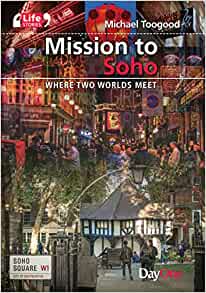Author: MICHAEL TOOGOOD
Publisher: DayOne Publications
172 pages
‘Brash, aggressive and often threatening’ are not always words one thinks of when it comes to church planting. But by page 15 of Michael Toogood’s story of how God called him and his late wife Pam to plant a church in the depths of Soho in the 1980s, the reader gets the picture.
Brian Edwards, in his introduction, calls this book the ‘story of urban church planting with its raw and realistic challenges’ (p.5). And it is raw and realistic, presenting a gritty account of how the couple started from a tiny, urine-soaked, blood-splattered basement flat to plant a church in Soho (which ended up in a building nestled between two sex shops), as well as planting a church in Covent Garden.
Toogood talks of the long-term hard slog of door-to-door ministry and getting to know the always colourful and often terrifying neighbours. He describes how he made inroads with the local Jewish community, who ‘got to hear of the Christian who was willing to get his hands down the loo’ (p.27); and how his wife’s ‘broom, bucket and big bottle of bleach opened doors’ (p.31).
At the time, this element of church planting in the UK was not taught at college, and yet it was the practical, honest, daily living of the Toogood family that won over many people’s affections, even if it did not always lead to church attendance and conversions. But as the author says on page 58, ‘Building anything to last involves digging deep trenches in the process of laying a solid foundation.’ One is reminded of the work of pioneer missionaries in similar situations.
This book is useful for anyone wanting to start a church plant. You cannot simply send a bunch of families to land crash-bang in the middle of a town and hope people attend your services. There are years of discouragements and years of blessing. Planting takes time. It takes patience. It could even take rolling up your sleeves and cleaning up a neighbour’s drunken vomit.
It can also lead, therefore, to an ‘absence of courtesy and brotherly love’ from fellow Christians and churches (p.125), with criticism from those who do not have experience of church planting. Some of the anecdotes in this pacy book will therefore sit uncomfortably with readers who are unfamiliar with the hard realities of inner-city life and witness.
Simoney Kyriakou







